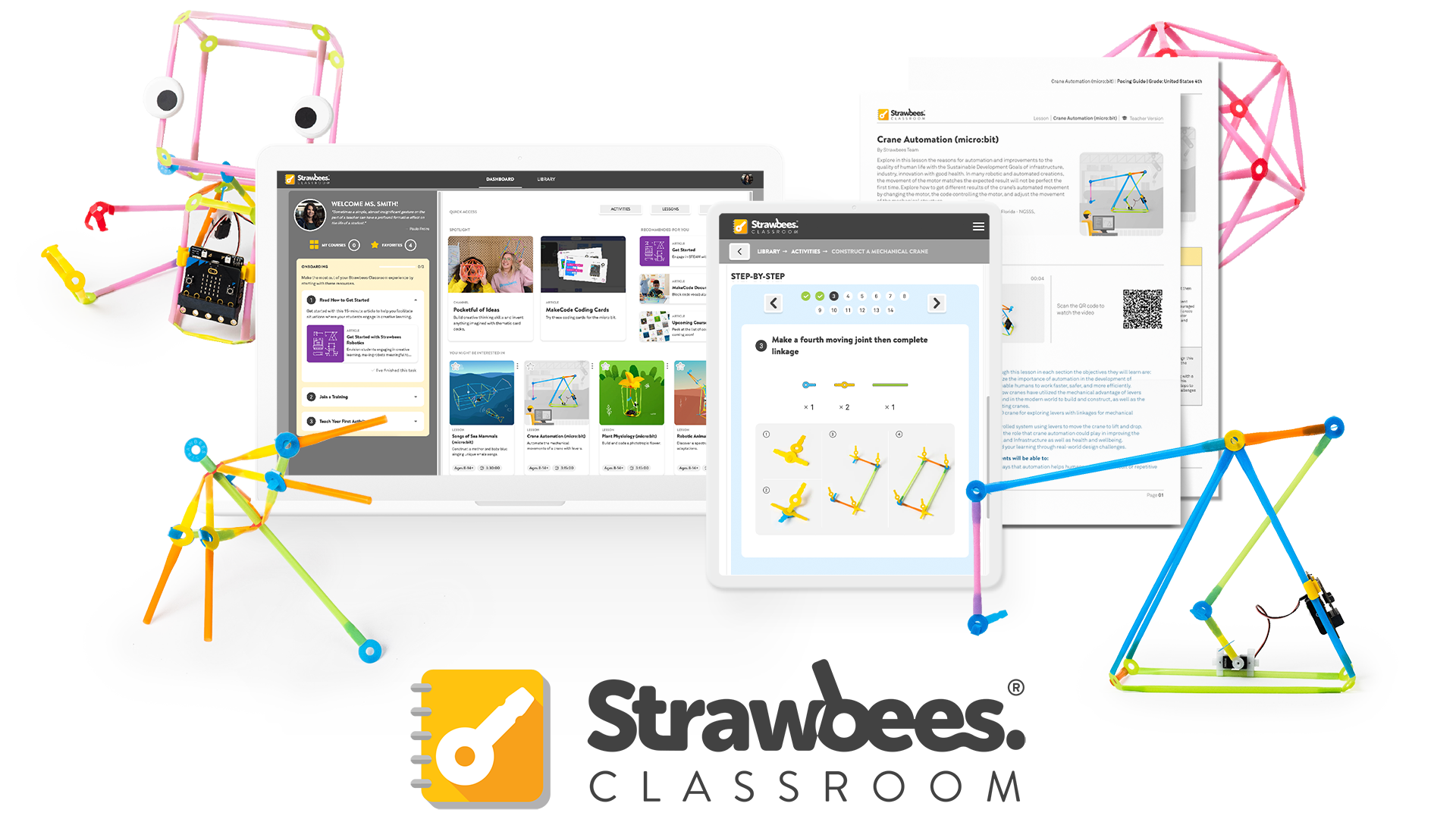Expanding Access to Innovation
Libraries play a vital role in expanding access to STEM education, providing students and communities with hands-on learning experiences outside the traditional classroom.
By incorporating STEM activities, libraries foster creativity, problem-solving, and technological literacy for learners of all ages.
STEM programs in libraries encourage lifelong learning and equitable access to resources, ensuring that everyone has the opportunity to explore science, technology, engineering, and mathematics.
At Strawbees, we support libraries in creating engaging and accessible STEM experiences that inspire curiosity and innovation.
In this page, you can find:
Three Key Benefits of Implementing STEM in Libraries
There are many reasons to implement STEM education in libraries but we've highlighted three primary reasons below including accessible STEM learning, fostering lifelong curiosity and innovation, as well as bridging the digital divide and bringing coding knowledge to more students.
Reasons to Implement STEM in Libraries
Accessible STEM Learning for All
What we know:
- Libraries provide a welcoming space where learners of all backgrounds can engage with STEM activities.
- By offering free or low-cost programs, libraries break down financial and educational barriers, allowing more to access STEM learning.
- According to Auburn University, libraries play an integral role in creating a world with "STEM for all".
Bridging the Digital Divide
What we know:
- Many libraries provide access to cutting-edge technology such as coding kits and robotics tools, helping bridge the digital divide.
- By integrating STEM programming, libraries empower learners with essential 21st-century skills such as collaboration that prepare them for future careers.
- Utilizing micro:bit with Strawbees, students can get an introduction to coding and robotics.
Fostering Lifelong Curiosity and Innovation
What we know:
- STEM programming in libraries encourages creative problem-solving and critical thinking.
- Through hands-on projects such as coding workshops, engineering challenges, and robotics programs, libraries help cultivate curiosity and passion for STEM.
- According to the Children's Literature Comprehensive Database, integrating STEM resources into libraries can help bridge the educational gap by providing all students with access to quality educational materials.
STEM in Libraries with Strawbees
Strawbees has had a significant impact on STEM in libraries. Our hands-on, innovative approach to teaching STEM empowers students to build, create, and collaborate—skills that are essential for their future success.
Copperas Cove ISD
Strawbees is implemented across multiple Libraries as well as Gifted and Talented and Makerspace programs in multiple schools and with varying grade levels in Copperas Cove Independent School District in Texas.
Hear from Holly Landez, Director of Digital Learning as well as Annababette Diemecke, Digital Learning Coordinator and Savannah Taylor, Librarian about how Strawbees is making an impact in their libraries.

What Educators Say
Here’s what librarians and educators are saying about their experiences:
“What I liked about Strawbees is it challenges (students) more than usual."
.jpg?width=100&height=100&name=SavannahTaylor%20(1).jpg)
Savannah Taylor
Librarian
“(Strawbees) is more engaging for them because they are the ones doing it!"

Annababette Diemecke
Digital Learning Coordinator
"(Strawbees) has versatility because it can be used in so many things. We have a summer STEM camp, Gifted and Talented, in a library, a regular classroom. I don't think it's pigeonholed to one level."

Holly Landez
Director of Digital Learning
Strawbees Classroom
Strawbees Classroom includes a variety of lessons that can be easily implemented in a library space, including anything from building basic shapes to using micro:bit to code a plant that responds to light. Strawbees Classroom is free to sign up for and explore, whether you have Strawbees just yet or not. To explore the lessons and teacher resources, you can join today.

Library STEM Grants
Finding funding for STEM and STEAM education can be challenging, but there are a range of grants and funding sources to support hands-on learning initiatives for libraries wanting to implement STEM lessons.
Many state library associations and foundations provide grants to support STEM programming in libraries. These funds help develop interactive learning spaces, purchase STEM kits, and expand library STEM outreach.
Some useful resources include:
Libraries can apply for funding to create STEM learning hubs and maker spaces within their communities.
National organizations support library-based STEM initiatives by offering grants for program development, technology integration, and professional training for library staff.
Examples of national-level grants include:
Applying for these grants can help libraries develop innovative STEM programming and increase access to hands-on learning experiences.
How We Can Help with Grant Applications
If you're looking for funding to bring hands-on STEAM learning to your students, we do have a grant writing webinar you can watch to help support you.
Next Steps
STEM programming in libraries provides accessible and engaging learning opportunities that inspire curiosity and innovation.
By offering hands-on STEM activities, bridging the digital divide, and fostering a lifelong love of learning, libraries play a crucial role in STEM education.
At Strawbees, we are committed to supporting libraries in creating dynamic STEM experiences for their communities.
Explore grant opportunities and hands-on learning tools to bring STEM education to your library!



